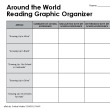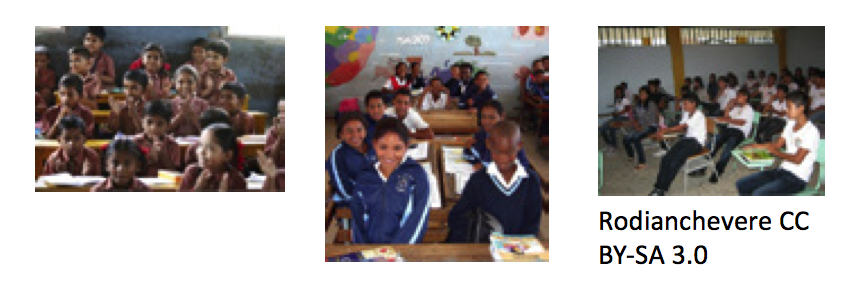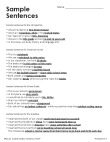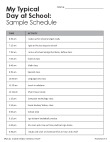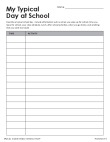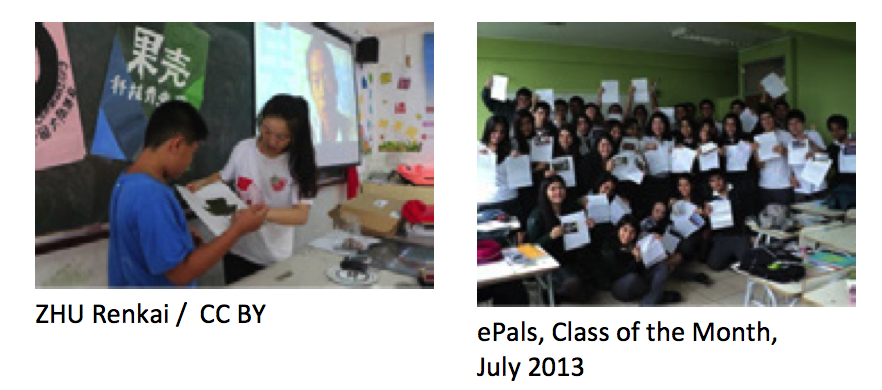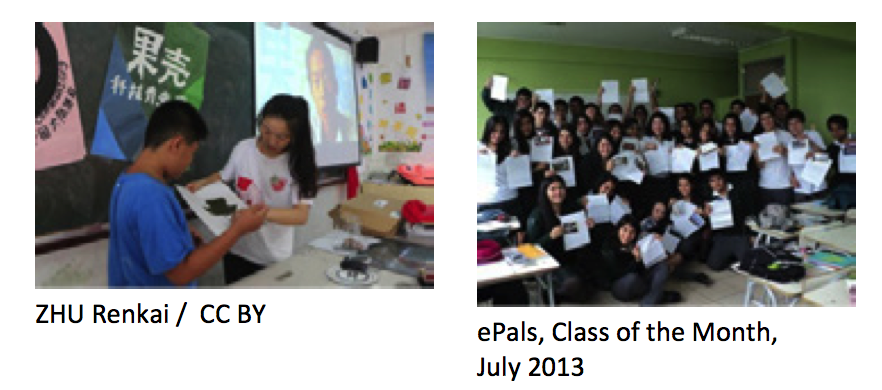DESCRIPTION
Did you know that students who live in Australia and Costa Rica have summer vacation in December and January? Or that Brazilian students go home for two hours in the middle of their school day to eat lunch? And that in Bangladesh, some students go to school on a boat?
School Swap offers your students an opportunity to discover facts like these as they learn about schools and students from around the world. Partnered classrooms will examine the similarities and differences between their school campuses, classrooms, and activities. As a culminating project, students will create a video that presents elements of their partners' school they would like to have in their own school.
In addition to learning about each other's schools, students will either practice or model the correct use of the English language. They will also learn techniques for communicating effectively with people from another country. NOTE: To Achieve the language goals, this Experience requires that one class be native English speakers, and one be non-native English speakers.
Did you know that students who live in Australia and Costa Rica have summer vacation in December and January? Or that Brazilian students go home for two hours in the middle of their school day to eat lunch? And that in Bangladesh, some students go to school on a boat?
1. Welcome!
Welcome to the ePals School Swap Experience! Over the next few days, you will "meet" students in another part of the world and begin learning about them and the schools they attend.
Your Experience will include opportunities to
- examine the similarities and differences between your school and your partner class's school.
- share your ideas while practicing or modeling English.
- make and share your own "School Swap" presentation.
- prepare to introduce your class to the students in your partner class.
2. Meet Your Partner Class
Say Hello!
Introduce yourself to your partner class. Create a video or text introduction telling them
Introduce yourself to your partner class. Create a video or text introduction telling them
- where you live—be specific!
- two or three things about your community.
- a few details about your school and class.
Share
3. First Thoughts
View
Let's get started! Watch this video of schools from around the world.
As you watch, keep the following questions in mind:
Let's get started! Watch this video of schools from around the world.
As you watch, keep the following questions in mind:
- What differences do you see among the schools and classrooms?
- What unfamiliar or unusual activities do you notice?
- How do students in different countries dress for school?
(check this video! HERE)
Share
 Post the most surprising or interesting things about schools around the world that you learned from watching the video. Then, review your ePals' posts and respond to them (if necessary).
Post the most surprising or interesting things about schools around the world that you learned from watching the video. Then, review your ePals' posts and respond to them (if necessary).
4. Reading Around the World
Preview this collection of articles about students around the world and then select one or more to read. Pay special attention to what schools and student life are like in the country you’re reading about.
Use the graphic organizer "Around the World Reading" to record what you find.
Use the graphic organizer "Around the World Reading" to record what you find.
Discuss
With your classmates, discuss the following questions:
--What is similar about these students experiences and your own? What is different?
--What do you think causes these similarities and differences?
Share
5. Our Classroom
Observe
In this activity, you will take your partners on a virtual tour of your classroom. Begin by taking a good look around.
In this activity, you will take your partners on a virtual tour of your classroom. Begin by taking a good look around.
- What items do you use every day? Why do you or your teacher use these items?
- What items of furniture are in your classroom? How are they arranged?
- What is on the walls? What is the purpose of each object?
Create
Based on what you observed, create a virtual tour of your classroom using videos, photos, and a written "tour guide" that explains how each item is used. Use Handout 2: “Sample Sentences” if you need some help with writing.
Based on what you observed, create a virtual tour of your classroom using videos, photos, and a written "tour guide" that explains how each item is used. Use Handout 2: “Sample Sentences” if you need some help with writing.
Share
 Post your tour for your ePals. Then review the tour they send you. Ask follow-up questions about any objects you don't understand. With your classmates, discuss the following questions, and then share your thoughts with your ePals.
Post your tour for your ePals. Then review the tour they send you. Ask follow-up questions about any objects you don't understand. With your classmates, discuss the following questions, and then share your thoughts with your ePals.
- How are your classrooms similar?
- How are they different?
6. School Tour
Discuss
Now it's time to "step outside the classroom" and take your partner class on a tour of your entire school! First, talk about these questions with your classmates.
Now it's time to "step outside the classroom" and take your partner class on a tour of your entire school! First, talk about these questions with your classmates.
- What are the most important places in the school?
- What is each room or area used for?
- Who are the important people in your school? What do they do?
Create
Based on what you discussed, create a virtual tour of your school using videos, photos, and a written "tour guide" that shows the different places in the school and introduces the important people.
Based on what you discussed, create a virtual tour of your school using videos, photos, and a written "tour guide" that shows the different places in the school and introduces the important people.
Share
- How are your schools similar?
- How are they different?
7. Typical School Day
Brainstorm
Each school has its own schedule and routines. What would you like to know about your ePals' school day? What do you think they would like to know about yours?

Write
Create a schedule showing a typical school day from the time you get up in the morning to when you return home from school. Use Handout 3: “Typical School Day” as a guide, and Handout 4 to develop your own version. Compare your schedule with those created by your classmates.
Share
 With your classmates, create one schedule you think best captures your day. Post it for your ePals and then read what they post for you. Send any questions you may have for them after reading their schedule, and respond to your partners' questions about your day.
With your classmates, create one schedule you think best captures your day. Post it for your ePals and then read what they post for you. Send any questions you may have for them after reading their schedule, and respond to your partners' questions about your day.
8. School Swap
Review and Discuss
Imagine that you are on a school improvement committee. Your job is to bring in new ideas from a school in another country that you think will improve your school and student learning. As a class, decide what things from your ePals’ school you want to have for your own school.
Create
Write a proposal, presenting your choices and explaining why you want to bring them into your school. Support your ideas by explaining the benefits you observed in your ePals’ school.
Sample School Swap Sentences:
- We want to have tables in our classroom. We like how students in our ePals’ school can work together easily at the tables.
- We want to wear school uniforms. Our ePals say it takes the worry out of what to wear.
Share
9. Final Thoughts
Review
Your School Swap is near its end. It's time to reflect on your Experience and say goodbye to your ePals. As a class, discuss and summarize what you learned about schools and classrooms in your ePals country.
Respond
- What is similar about your ePals’ school experiences and your own? What is different?
- What do you think causes these similarities and differences?
Remember to thank your partner class for the Experience and say goodbye.

